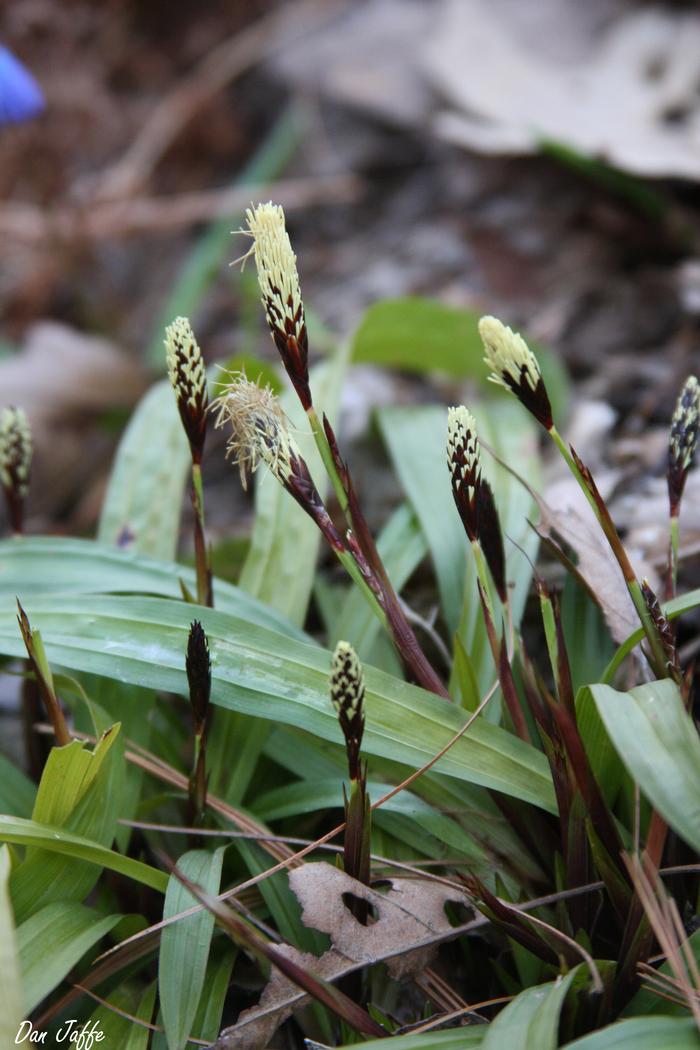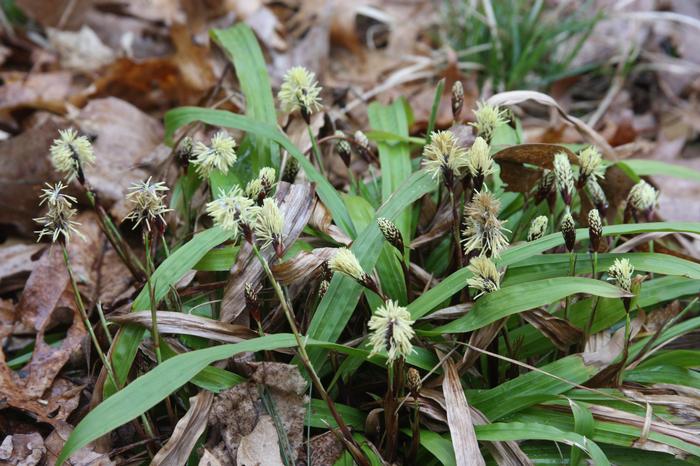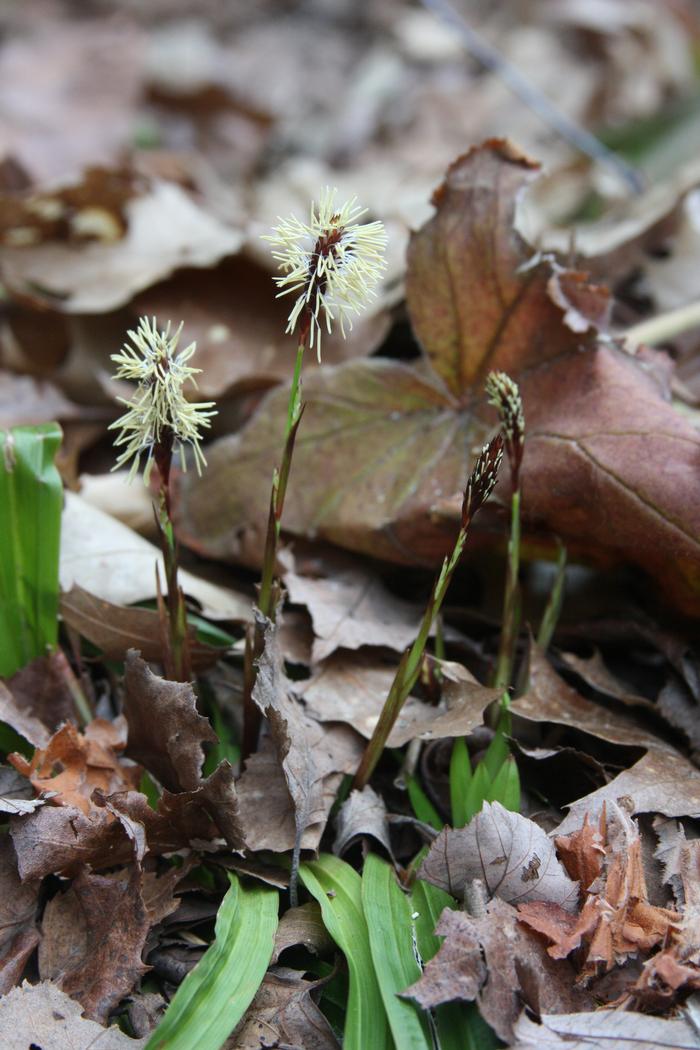General Description
Bloom Description: Blooms April to May. Yellow tufts on 12 inch stalks that provide wonderful early-season interest.
Growth Habit & Shape: Clumping.
Soil Preferences: Prefers rich, moist soils, but can handle drought and poorer soils.
Root Description: Fibrous. Root system seems small in comparison to the large, lush foliage.
Garden Uses: An accent plant, adding texture to a shady woodland garden. The semi-evergreen foliage and showy blooms provide interest year-round.
Best Management & Maintenance: Low maintenance. Foliage can be cut back in spring as desired.
Common Problems: This plant can occasionally be dug up out of the soil because the root system is so minimal. It will often recover if replanted.
Benefits
Ornamental Value: The ornamental value of this plant is largely to be found in the lush texture of it's foliage. Considered a "neat" looking plant.
Wildlife Benefits: Various insects feed on the foliage of this sedge, including the caterpillar of the Appalachian Brown butterfly (Satyroides appalachia). Birds feed on the seeds.
Other Practical/Environmental Benefits:
Use in place of: Miniature hostas.
Ecology
Habitat:
Rich woodlands, woodland slopes and ravines.
Response to Disturbance:
Native State Distributions:
Canada: NB, NS, ON, QC
USA: AL, CT, GA, IA, IL, IN, KY, MA, MD, ME, MI, MN, NC, NH, NJ, NY, OH, PA, SC, TN, VA, VT, WI, WV
Wetland indicator status: Not classified.
Companion Plants:
Wild ginger (Asarum canadense), Trillium spp., baneberries (Actaea spp.), blue-stemmed goldenrod (Solidago caesia), wild strawberry (Fragaria virginiana), dutchman's-breeches (Dicentra spp.), wood ferns (Dryopteris spp.), bellworts (Uvularia spp.), wood asters (Eurybia spp.)
References
Return to Top



